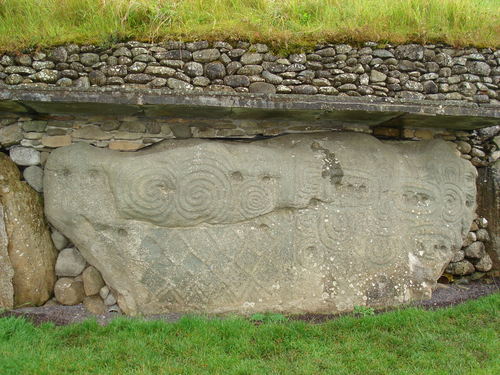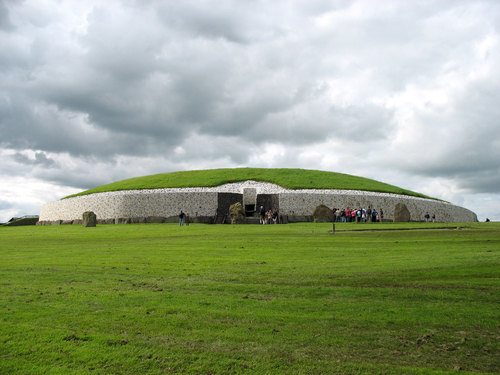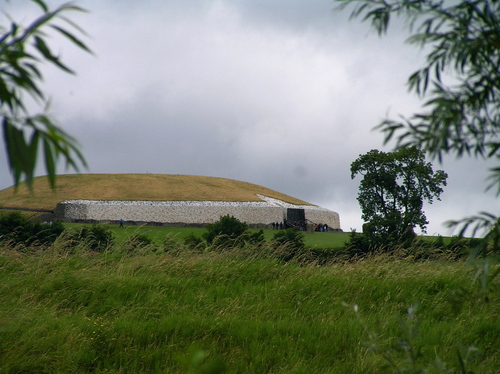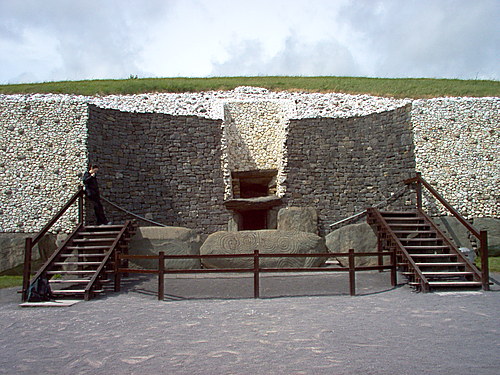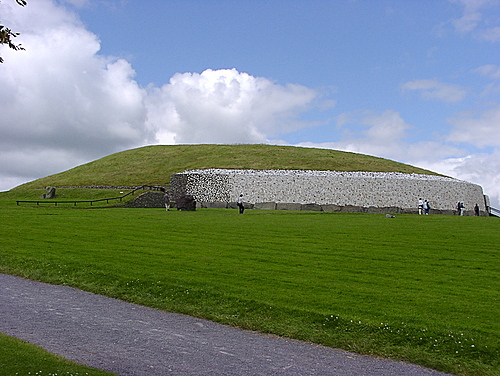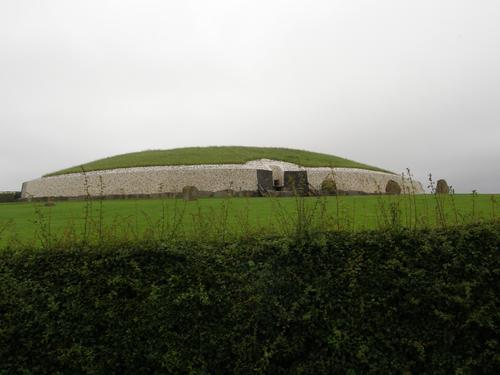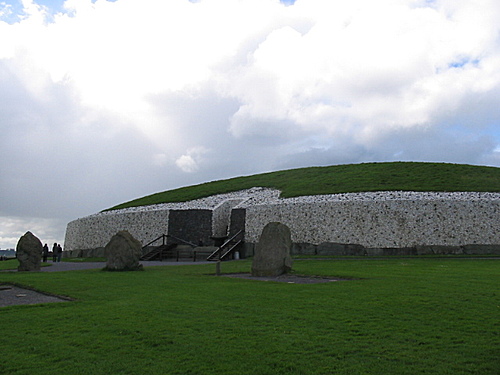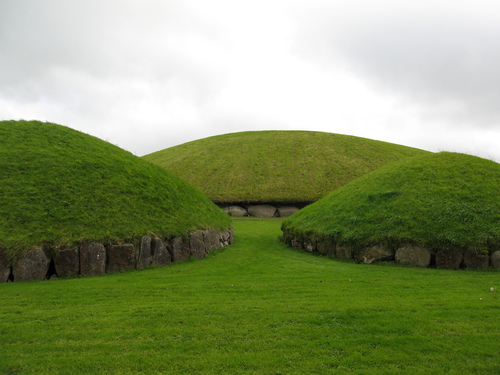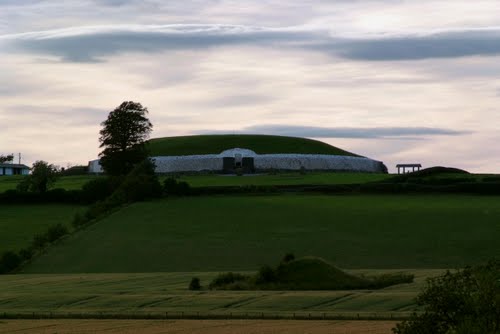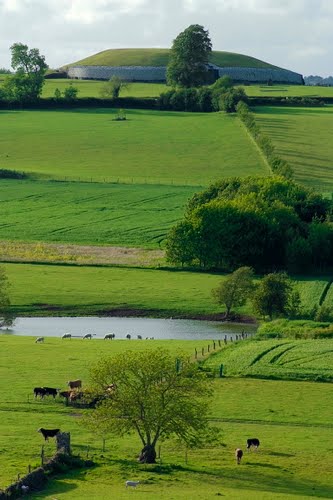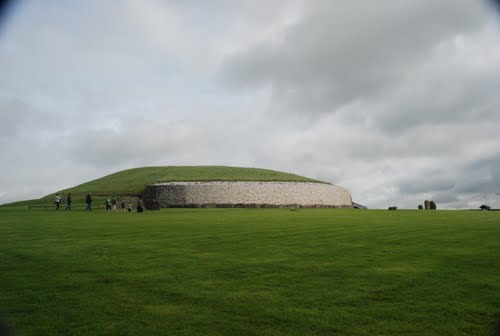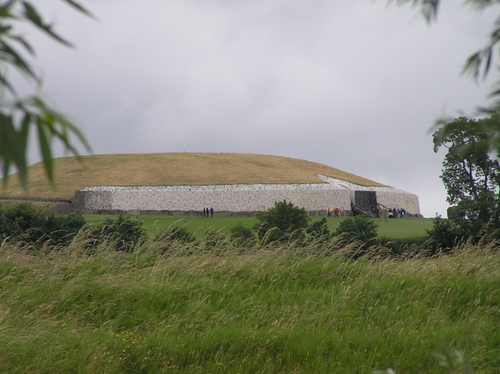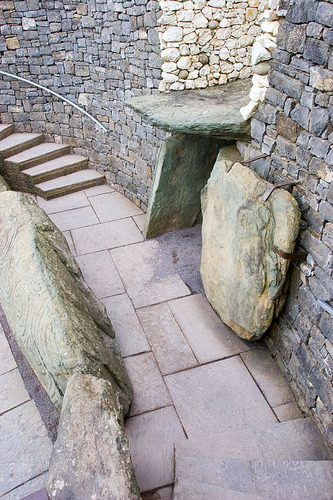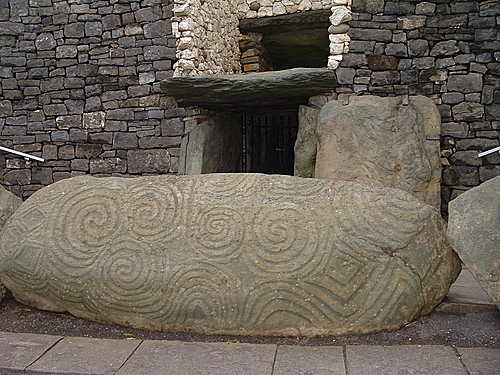Newgrange is a prehistoric monument in County Meath, Ireland, located about one kilometre north of the River Boyne. It was built during the Neolithic period around 3000 BC to 2500 BC, making it older than Stonehenge and the Egyptian pyramids. The site consists of a large circular mound with a stone passageway and interior chambers. The mound has a retaining wall at the front and is ringed by engraved kerbstones. There is no agreement about what the site was used for, but it has been speculated that it had religious significance – it is aligned with the rising sun and its light floods the chamber on the winter solstice. It is the most famous monument within the Neolithic Bru na Boinne complex, alongside the similar passage tomb mounds of Knowth and Dowth, and as such is a part of the Brú na Bóinne UNESCO World Heritage Site. Newgrange also shares many similarities with other Neolithic constructions in Western Europe, such as Maeshowe in Orkney, Scotland and the Bryn Celli Ddu in Wales.
After its initial use, Newgrange was sealed for several millennia, although it remained storied in Irish mythology and folklore. Antiquarians first began its study in the 17th century, and archaeological excavations took place at the site in the years that followed. Archaeologist Michael J. O'Kelly led the most extensive of these and reconstructed the front of the site in the 1970s. Newgrange today is a popular tourist site and, according to the archaeologist Colin Renfrew, is "unhesitatingly regarded by the prehistorian as the great national monument of Ireland" and as one of the most important megalithic structures in Europe.








